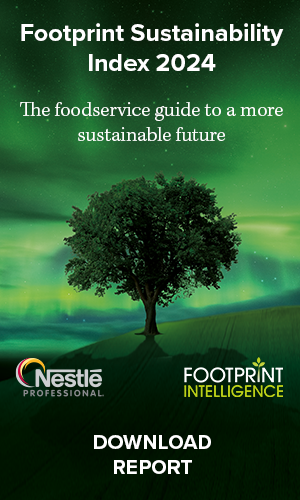Competition laws are thought to have had a ‘chilling’ effect on the environmental actions businesses take. New guidelines may help food companies collaborate. By David Burrows.
Let me take you back to 2015, in the Netherlands, when some food businesses were working on what they called the “chicken of tomorrow”. A bird that was being pitched as more ethical and sustainable than the rest: animal welfare standards were (slightly) above the legally required minimum, it was a slower growing breed and the chickens would be afforded more space, a natural day and night rhythm and distractions. They would be fed responsible soya and need fewer antibiotics and replace all the cramped and bored regular birds. Supermarkets, processors and farmers agreed on the concept – after all, what was not to like?
But the country’s competition authority (ACM) concluded that it restricted competition. “The most important reason is that the sustainability arrangements as currently designed do not generate any net benefits for consumers,” it noted. “In that assessment, the benefits and costs for consumers with regard to animal welfare, the environment and public health have explicitly been taken into account.” In other words, a fraction more space and a few days longer before slaughter didn’t cut it when it came to the premium consumers would pay; while the regulator welcomed the move to launch such sustainability initiatives, it said animal welfare shouldn’t be used as a pretence to overcharge consumers.
There are other examples of companies falling fowl (ahem) of competition laws when they have tried to collaborate on sustainability. Lawyers will talk of BMW, Volkswagen and Daimler’s cartel case in 2021 as another example of a rather dubious attempt to ‘green’ an industry. These laws are there to protect consumers of course but they have also had a chilling effect on companies that truly want to collaborate in ways that would cut emissions, improve animal welfare or reduce single-use packaging.
“Undue fear of competition is holding back the vital work that business is so often willing to do,” wrote Simon Holmes, author of Competition law, climate change & environmental sustainability, in a letter to the Financial Times recently. “We cannot just rely on regulation and public sector initiatives, vital as they are,” he wrote. So have businesses had their hands tied?
Paul Crewe is chief sustainability officer and executive director at Anthesis, a consultancy, and former head of sustainability at Sainsbury’s – a role in which he says he experienced first hand how fears over competition laws “stifled” progress. He told Ends Report recently that trying to share ideas and thoughts with peers was “an incredible minefield to walk on. There were a number of industry groups that were bringing together peer groups to try and create learning opportunities […] however everyone was conscious of the ramifications of competition laws and quite often we would have a lawyer in the room and anti-trust wording was either read out or signed.”
Linklaters research, published in 2020, showed more than nine in 10 businesses want to work closely with peers in achieving their sustainability targets but 57% had “concrete examples” of initiatives that had been kiboshed for fear of breaking competition rules (and the fines are considerable). The International Chamber of Commerce has also produced research with business case studies and proposals. “At a general level, businesses seeking to participate in environmental, social and governance (ESG) initiatives—and in, particular, sustainability initiatives—are frustrated that the antitrust framework internationally is not providing the certainty they require that genuine sustainability-focused initiatives will not be considered to breach antitrust rules,” the authors noted.
Green guidance
Slowly but surely that is happening though – and the UK is part of the movement to ensure competition laws don’t get in the way. In February, the Competition and Markets Authority (CMA) published draft guidance on the application of the Chapter I prohibition in the Competition Act 1998 to environmental sustainability agreements. In a nutshell, this sets out how competition law applies to agreements between companies that span air and water quality, biodiversity conservation, sustainable use of raw materials, and of course, net-zero. “It gives firms greater certainty about when agreements that genuinely contribute to addressing climate change will be exempt from competition law,” says CMA chief executive Sarah Cardell.
The legal experts I spoke to recently thought the guidance could well do just that. They said it was a common sense approach, noting how the CMA, as part of its role in helping the UK achieve net-zero, wants to help business collaborate. Food companies could cooperate more on the major challenges posed by deforestation, for example, or emissions from livestock and single-use packaging.
Packaging is mentioned specifically in the draft guidance in a section about phasing out of certain products. “[…] if businesses agree to stop using a particular type of packaging and this does not lead to prices increasing to an appreciable extent, this is unlikely to infringe the Chapter I prohibition. Similarly, if businesses stop supplying a particular type of product, but customers still benefit from significant choice (either from the parties or from other businesses operating in the market), this is unlikely to infringe the Chapter I prohibition.”
That sounds similar to those chickens. But companies need to justify their collaborations with hard evidence. There will need to be third party independent advice, from lawyers, scientists, and other consultants to stress test the assumptions and findings of the agreements. What exactly is required and how in-depth it needs to be isn’t quite clear but the CMA has an “open door” policy on this. The justification bar will likely be higher for riskier agreements, such as those involving changes to price and choice, lawyers suggest.
The CMA also wants to see more climate change agreements. The more permissive approach is because climate change represents a “special category of threat”, according to the CMA’s Cardell.
Indeed, there is a chance some companies will look to “rig the system”, says George Harding-Rolls from Changing Markets Foundation, but he admits the current competition restrictions mean that the goodwill from working collaboratively can “butt up against the hard edge of the law very quickly”.
Clarity on collaboration
To be clear, what the CMA is proposing is not a change to the law, but clearer guidance on a specific part of it – final guidance should arrive soon. “This is exactly the kind of thing we need to see from [the] government,” says Bob Gordon, director at the Zero Carbon Forum, which works with hospitality and foodservice businesses like Burger King, Whitbread, and Fuller’s on net-zero. “The nature of collaboration will change substantially over the next 10 years.”
Warm words are often hard to come by when it comes to red tape and regulators but the CMA’s guidance is threatening to buck the trend. It may also provide other regulators with pause for thought.
This article is adapted from a wider piece on this guidance for ENDS Report, available here.












